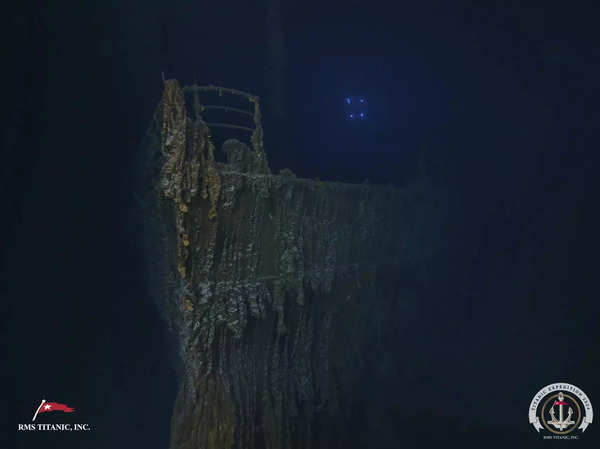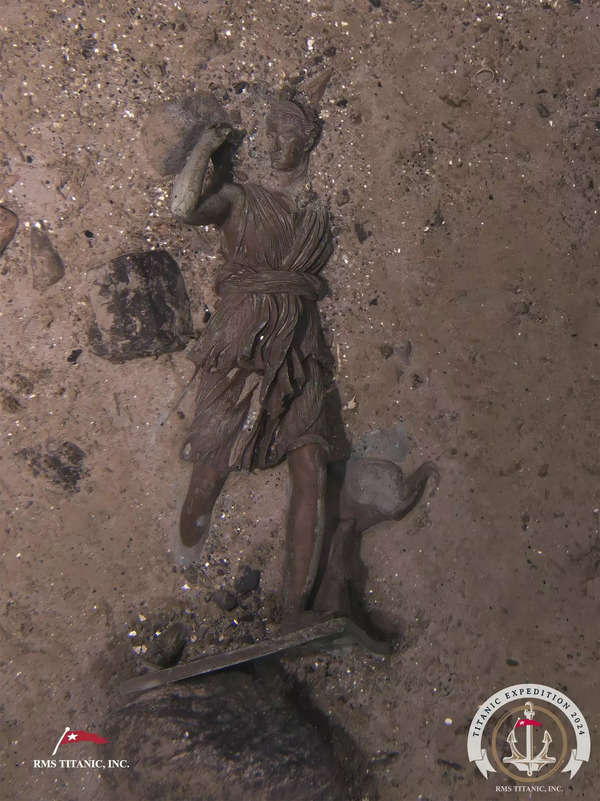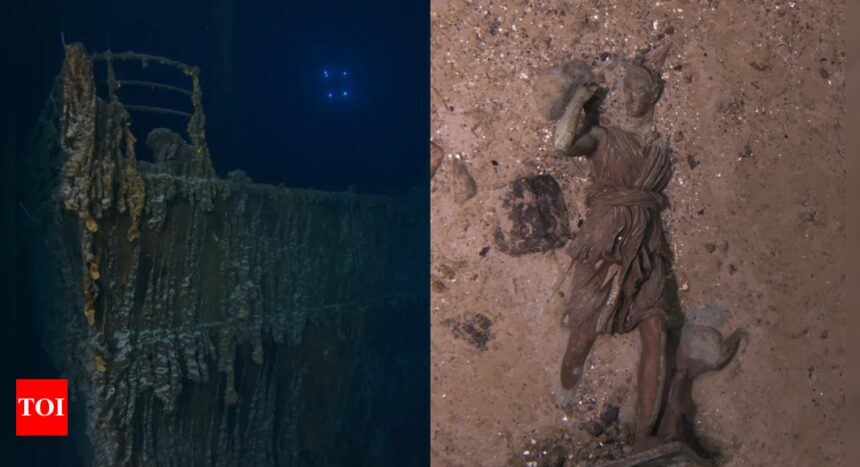The railing around the ship’s iconic bow, famously depicted in James Cameron’s 1997 film, was rediscovered during a series of dives by underwater robots this summer, according to CBS News.
RMS Titanic, Inc., the Georgia-based company that holds the salvage rights to the 112-year-old wreck, stated on its website, “Titanic’s bow is iconic… a haunting image rising from the seafloor as a testament to her strength and defiance.” However, a 15-foot section of the once-intact railing on the bow’s forecastle deck is now missing from the port side.

This summer marked the company’s first return to the wreck in nearly 14 years, with the expedition concluding in Providence, Rhode Island, on August 9. During the 20-day mission, the team captured over 2 million high-resolution images, including the fractured railing, which serves as a “reminder of the deterioration that’s happening every day,” said Tomasina Ray, Director of Collections at RMS Titanic, Inc. She noted that the rate of decay remains uncertain but is being monitored in real-time.
‘Diana of Versailles’ discovered
Alongside mapping the entire wreck, the expedition made a notable discovery: a two-foot-tall bronze statue, “Diana of Versailles,” once thought lost, was found in the debris field. The statue of Diana was displaced when the lounge tore open during the sinking of the ship, according to the company. It was a centerpiece in the first-class lounge and was last seen and photographed by Robert Ballard in 1986, a year after he discovered the wreck. Titanic researcher James Penca described the find as “like finding a needle in a haystack.”

Bow resting at the bottom
The ship, which split in two as it sank in 1912 after hitting an iceberg, has left haunting images of its bow resting at the bottom of the North Atlantic. The new photos show significant changes, with a portion of the bow’s upper deck railing now detached.
Company expresses sadness over the decay of the ship
The company expressed sadness over the loss and acknowledged the inevitable decay of the ship, noting that their mission is to preserve and document as much as possible before it’s too late.
The July expedition, marking the company’s ninth visit since 1987, brought together a team of ocean imaging experts, oceanographers, scientists, and historians to evaluate the wreck’s condition, identify artifacts, and contribute to ongoing conservation efforts.
“Over the course of the next few weeks and months, we will conduct a more thorough review of Titanic’s condition and her changes over time,” the company said, as quoted by the New York Post.
Past explorations, including a 2019 dive by Triton Submarines, have shown the ship’s steady decay due to salt corrosion, metal-eating bacteria, and deep ocean currents.
Source : Times of India








